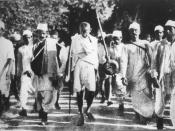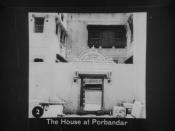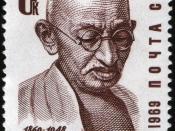SATYAGRAHA AGAINST THE ROWLATT ACT (MARCH, 1919).
Mahatma Gandhi had accepted Gopal Krishna Gokhale as his political Guru (mentor) after coming back to India. Gopal Krishna in his turn had encouraged him to study the political situation of India for two years. As it has already been mentioned above, he had used satyagraha against the British in Champaran as a first instance of his familiarizing with the Indian situation and in which he had succeeded. In two other instances, at Kheda alongside the peasants against a rapacious government and at Ahmedabad alongside the mill workers against their exploitative employers, also he had used his techniques satygraha successfully. Apart from these the British Government had also assured the Indians of giving them increased measure of self-rule after the First World War was over.
However, at the end of the War, contrary to their expectation, the Indians faced famines, epidemics, greater economic exploitation, press censorship, and other such oppressive measures.
During the War, the Indian Securities Act, which could only be promulgated in the event of war, had also been passed. Thus, in 1917, the British-India Government appointed a committee under the chairmanship of Sir Sydney Rowlatt, on whose recommendation two bills were tabled in the Central Legislative Council. These are know in the Indian history as the Rowlatt Bill. On 19 March 1919, one of these bills was passed to become an Act. As per this Act, any body could be arrested on the basis of suspicion. No appeal or petition could be filed with the help of an advocate and if were made against such arrests. Such a measure was branded as 'black law'. Mahatma Gandhi in a letter to the Viceroy warned of a countrywide satyagraha if this Act was not withdrawn immediately. In this context, the term hartal...


